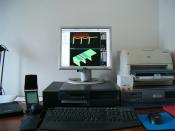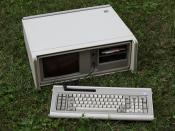Module 1
Section 6
6.1 IBM Clones - Introduction
Clones: Computers which are identical to the IBM PC in every important respect.
Companies such as Tandy and Hewlett-Packard produced computers which their software was compatible with the IBM PC, but their hardware wasn't. This meant that the plug-in cards were not compatible with the new computers. Companies manufacturing these cards could not support all of the different computer architectures. It quickly became clear to computer manufacturers that to be successful the key was not to be similar to IBM machines, but to be identical.
________________________________________
6.2 Reverse Engineering
Reverse engineering: the process of taking a completed piece of technology and replicating its function without directly copying the code that makes it work. This is a means of achieving the same functionality without breaking copyright.
It is called reverse engineering because it reverses the conventional engineering process, which starts with disparate components and constructs a functional piece of technology from them.
With reverse engineering the starting point is the completed piece of technology, in this case IBM's BIOS.
What the technology does is not protected by copyright, but how it does it is protected. Thus to reverse engineer IBM's BIOS a company had to replicate its function without directly copying the code that made the BIOS perform the way it did.
To do this they had to
1. First find Virgins: engineers who could prove they had not had contact with IBM's BIOS, and thus could not be accused of directly copying the code.
2. New virgins were then required to build a BIOS which matched the specification given.
3. At the end of such a process you have a device which performs exactly as the original device, without ever having directly copied the means of doing it.


